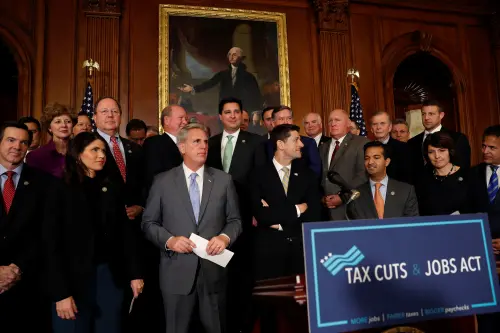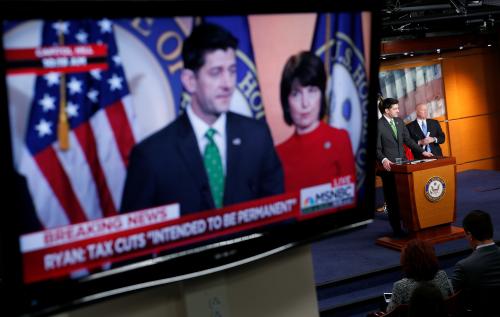On December 22, 2017, Donald Trump signed into law the biggest tax overhaul since the Tax Reform Act of 1986. The new tax law makes substantial changes to the rates and bases of both the individual and corporate income taxes, most prominently cutting the maximum corporate income tax rate to 21 percent, redesigning international tax rules, and providing a deduction for pass-through income.
Other major changes include expensing of equipment investment; elimination of personal and dependent exemptions, the tax on people who do not obtain adequate health insurance coverage, and the corporate alternative minimum tax; and increases in the standard deduction, the estate tax exemption, and the individual alternative minimum tax exemption.
In “Effects of the Tax Cuts and Jobs Act: A preliminary analysis” (PDF), William Gale, Hilary Gelfond, Aaron Krupkin, Mark J. Mazur, and Eric Toder summarize the provisions of the bill and provide preliminary analysis of their effects.
They find that TCJA will stimulate the economy in the near term, but the long-term impact on gross domestic product (GDP) will be small. The impact will be smaller on gross national product (GNP) than on GDP because the law will generate net capital inflows from abroad that have to be repaid in the future.
The new law will reduce federal revenues by significant amounts, even after allowing for the impact on economic growth. It will make the distribution of after-tax income more unequal. If it is not financed with concurrent spending cuts or other tax increases, TCJA will raise federal debt and impose burdens on future generations. If it is financed with spending cuts or other tax increases, TCJA will, under the most plausible scenarios, end up making most households worse off than if it had not been enacted.
The new law simplifies taxes in some ways but creates new complexity and compliance issues in others. It will raise health care premiums and reduce health insurance coverage. It will affect activities in many sectors, including state and local public spending, charitable organizations, and housing.
The authors conclude that the new law leaves many unanswered questions. It phases out many provisions over time, and it leaves US revenues significantly below what is needed to address long-term fiscal shortfalls. These aspects invite reconsideration of the tax policy choices made in the TCJA over the next several years.










